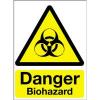My dislike of the spiral platers was mainly due to the fact that I have historically always tested more solid products, meat especially, than liquid ones.
The lab I was in at the time purchased it without really researching how solid samples would block the tip, they over-estimated the efficacy of filter bags!
For counting colonies in overnight cultures and liquid or water samples it would be excellent.
If our food samples are complete unknowns in that we've no history of testing that type of sample, then we'd plate all the dilutions.
Once we have some idea of the likely count, we plate out 3 dilutions, one on either side of the expected value.
That comes with experience and knowing your product/process really well though, so we cant always do it.
If you know for sure that the counts will be in the -5 -6 range, then I'd be plating out -4 -5 -6, it seems pointless doing -1 to -3, except to cover that 1 in 1000 chance that one of your samples has <1000 cfu/g.
Go through your results history and figure out how often that happens and you can assess if there is an acceptable level of risk in not plating the lower dilutions.














